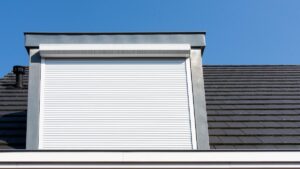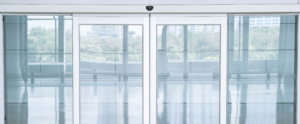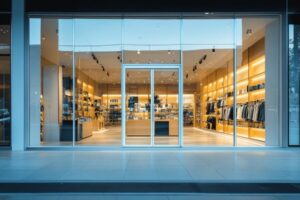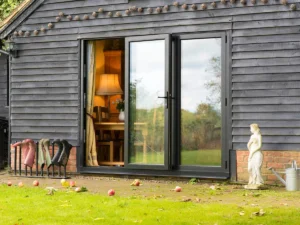
Why Choose Timber Shopfronts? Benefits of Wood Over Other Materials
- October 6, 2024
- sanjeev chauhan
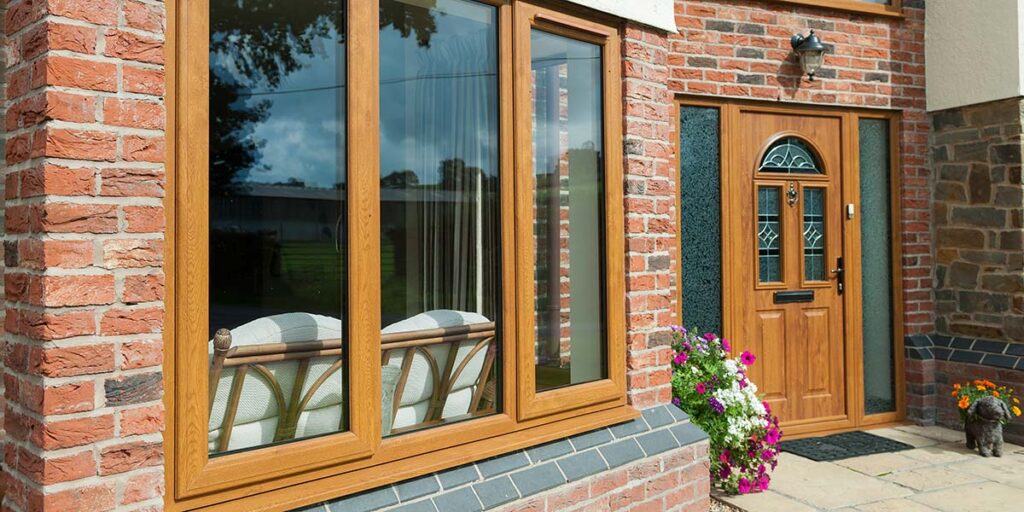
Shopfronts are often the first impression that customers form about a business. They set the tone for what lies within, and as such, careful consideration is required when choosing the right materials. While several materials are available for shopfront construction—such as aluminum, steel, and glass—timber shopfronts stand out for various reasons. They combine aesthetics, sustainability, and functionality, offering a timeless and classic appearance that appeals to various business types. This blog will explore why timber shopfronts are a superior choice over other materials, highlighting their key benefits and advantages.
Aesthetic Appeal and Customization
One of the most significant advantages of timber shopfronts is their aesthetic appeal. Wood is a versatile material that can be molded, stained, and painted to fit a wide range of architectural styles. Whether a business is housed in a historic building or a modern structure, timber can be customized to match the character and charm of the establishment.
Timber shopfronts have a natural warmth that materials like aluminum and steel lack. While metal may give off a sleek, contemporary look, it often feels cold and impersonal. On the other hand, timber exudes an inviting, welcoming atmosphere. Its organic texture adds depth and richness to a storefront, making it visually appealing and enhancing the customer experience.
Moreover, timber can be crafted in various styles, from traditional to contemporary. Whether you’re looking for ornate carvings or sleek, minimalist lines, wood offers endless design possibilities. With the right finish, timber shopfronts can mimic various types of wood grains and colors, giving business owners unparalleled freedom to design a storefront that aligns with their brand identity.
Sustainability and Environmental Benefits
As businesses increasingly shift towards more sustainable practices, timber shopfronts offer an eco-friendly alternative to other materials like metal or plastic. Wood is a renewable resource, and when sourced from responsibly managed forests, it provides a sustainable option for businesses concerned about their environmental footprint.
Many manufacturers of timber shopfronts adhere to strict sustainability standards, ensuring that the wood used comes from forests that are replanted and managed to minimize environmental damage. This makes timber an excellent choice for businesses looking to boost their green credentials.
In addition to being a renewable resource, timber is also biodegradable. Unlike aluminum and steel, which take considerable energy to recycle and break down, wood decomposes naturally without causing harm to the environment. This makes timber shopfronts a more eco-conscious choice over time.
Timber shopfronts also contribute to energy efficiency. Wood is an excellent natural insulator, helping to maintain a building’s internal temperature. This can reduce heating and cooling costs for businesses, especially in extreme weather conditions. By choosing timber, companies not only benefit from a visually appealing storefront but also contribute to environmental sustainability and lower operational costs.
Durability and Longevity
A common misconception about timber shopfronts is that they are less durable than materials like steel or aluminum. However, when treated and maintained properly, timber is remarkably durable and can withstand various environmental conditions.
Modern wood treatments protect timber from moisture, pests, and rot, ensuring that it can last for decades. With the right care—such as regular varnishing or painting—timber shopfronts can maintain their appearance and structural integrity for many years. In fact, many historic buildings feature wooden shopfronts that have stood the test of time, demonstrating the longevity of this material.
Timber is also highly resistant to impact. While materials like glass or even some metals can dent or shatter upon impact, timber absorbs shocks more effectively. This makes it a practical choice for high-traffic areas or businesses that need a robust storefront to handle the daily wear and tear of urban environments.
Moreover, timber can be repaired more easily than other materials. If a section of a timber shopfront becomes damaged, it can often be restored or replaced without needing to overhaul the entire structure. This can result in significant cost savings over time, as repairs are less invasive and expensive than replacing entire sections of metal or glass.
Timelessness and Versatility
Timber shopfronts offer a timeless appeal that transcends architectural trends. While materials like glass and metal may feel more modern, they can also date quickly as design trends evolve. Timber, on the other hand, has been used in building construction for centuries and continues to be a popular choice today.
Wood’s versatility allows it to complement any architectural style, whether a business is housed in a historic building or a contemporary space. This timelessness makes timber shopfronts a wise investment, as they are less likely to appear outdated over time. A well-designed wooden storefront can add a sense of permanence and reliability to a business, qualities that many customers appreciate.
In addition to its aesthetic versatility, timber is compatible with other materials. It can be paired with glass, metal, or stone to create unique and visually striking designs. For example, a timber shopfront with large glass windows can offer the best of both worlds—an inviting, warm wooden façade combined with the sleek, modern transparency of glass.
Ease of Maintenance and Repair
While timber may require more maintenance than some other materials, this is not necessarily a disadvantage. Regular maintenance of timber shopfronts—such as repainting, varnishing, or treating the wood—can keep it looking fresh and beautiful for decades.
The maintenance process for timber is straightforward and cost-effective compared to materials like metal, which may require specialized treatments to prevent rust or corrosion. With the right care, timber shopfronts can maintain their structural integrity and appearance for many years.
If damage does occur, timber is one of the easiest materials to repair. Unlike glass, which may shatter, or metal, which can dent or warp, damaged timber can often be sanded down, treated, and refinished without needing to replace large sections of the storefront. This makes timber a practical, cost-effective option in the long term.
Better Insulation Properties
Another key benefit of timber shopfronts is their superior insulation properties. Wood naturally has low thermal conductivity, making it an excellent insulator. This means that a timber shopfront can help keep a building warm in the winter and cool in the summer, reducing the need for artificial heating or cooling.
In contrast, materials like aluminum or glass can easily transfer heat, making it harder to regulate a building’s internal temperature. Poor insulation can result in higher energy bills as businesses need to rely more on air conditioning or heating systems. By choosing timber, businesses can enjoy a more energy-efficient storefront that helps lower their utility costs.
Timber’s natural insulating properties also contribute to a more comfortable indoor environment. For businesses that rely on foot traffic, such as cafes or boutiques, maintaining a pleasant indoor temperature is essential for creating a welcoming space for customers.
Acoustic Benefits
Another often overlooked advantage of timber shopfronts is their acoustic insulation properties. Wood is a natural sound absorber, helping to reduce noise pollution from busy streets or nearby businesses. This can be particularly beneficial for shops located in bustling urban areas where external noise can disrupt the customer experience.
By installing a timber shopfront, businesses can create a quieter, more serene atmosphere inside their premises. This can be a significant advantage for establishments such as cafes, salons, or spas, where a peaceful environment is crucial to customer satisfaction.
Enhanced Security
Security is a top priority for any business, and timber shopfronts can offer excellent protection. While materials like glass may seem fragile, timber provides a robust and sturdy barrier against potential break-ins or vandalism.
Timber can be reinforced with additional security features, such as steel frames or toughened glass, to provide an even higher level of protection. This makes timber shopfronts an ideal choice for businesses that need both aesthetic appeal and enhanced security.
Cost-Effectiveness
While the initial cost of a timber shopfront may be higher than materials like aluminum or glass, the long-term benefits often outweigh the upfront investment. Timber’s durability, ease of repair, and energy efficiency contribute to lower maintenance and operational costs over time.
Moreover, timber’s aesthetic versatility and timeless appeal mean that businesses are less likely to need costly renovations or updates in the future. A well-designed timber shopfront can enhance a business’s curb appeal for decades, making it a cost-effective choice in the long run.
Conclusion
In conclusion, timber shopfronts offer numerous advantages over other materials, including aesthetic appeal, sustainability, durability, and cost-effectiveness. They provide a unique combination of warmth, versatility, and functionality that is hard to replicate with materials like aluminum, glass, or steel. For businesses looking to create a welcoming and visually appealing storefront, timber is an excellent choice that offers timeless beauty and practical benefits. From energy efficiency to enhanced security, the benefits of timber shopfronts make them a worthwhile investment for any business looking to make a lasting impression.



